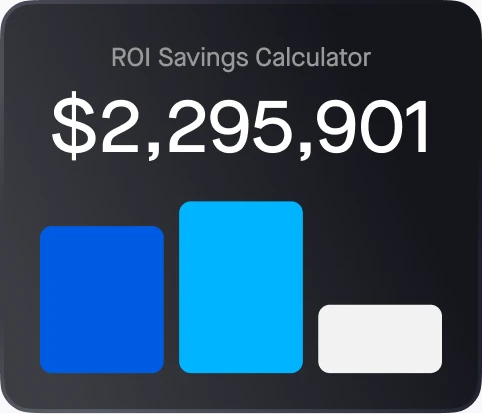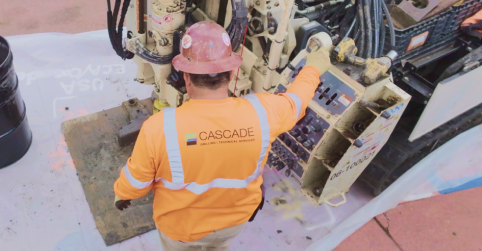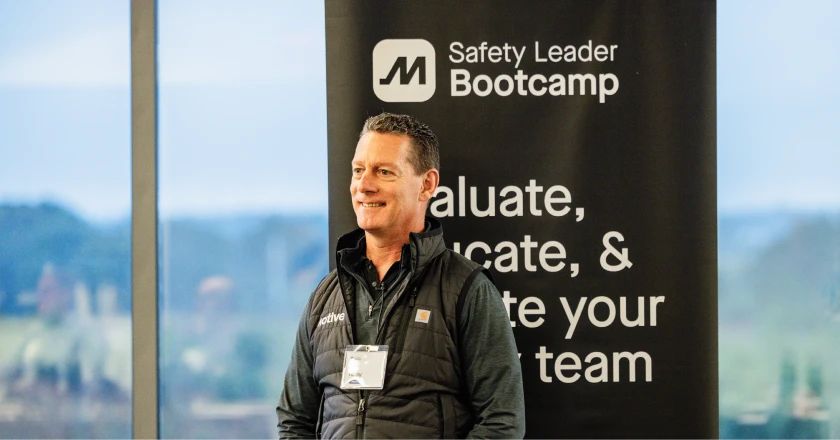The AI revolution isn’t coming — it’s already here. And nowhere is its impact being felt more than in the physical economy — the industries responsible for moving goods, building infrastructure, and powering our communities.
From transportation and logistics to construction, energy, and field services, businesses in these sectors are embracing AI faster and more broadly than almost any other part of the economy. For them, AI isn’t an experiment. It’s a necessity.
While billions of dollars have poured into AI investment across industries, one segment of AI is delivering strong ROI today: computer vision AI. Motive customers are using AI-powered technology to prevent accidents, lower costs, and drive massive efficiency gains. The results speak for themselves.
Why the physical economy is adopting AI faster than ever
The industries we serve — trucking, logistics, construction, oil and gas, and field services — operate in high-risk, high-cost environments, where safety, efficiency, and profitability are constantly at odds.
Unlike other sectors where AI is being explored in small-scale IT pilots, physical operations leaders are deploying AI at scale, because it directly impacts their bottom line. AI in fleet management and job site operations is being funded not by IT departments, but by COOs and CFOs out of their core operations budgets. Why? Because the need is immediate, and the ROI is undeniable.
Take Ernst Concrete, for example. By leveraging Motive’s AI-powered safety technology, the company achieved a 2,000% return on investment in just 13 months, saving $6.5 million. That’s not a future promise — it’s actual, measurable impact today.
AI’s biggest success story: Computer vision
Of all the AI technologies flooding the market, computer vision has emerged as the most impactful for physical operations, filling critical gaps in human perception and decision-making in real time.
Real-world AI impact
Motive’s AI-powered dash cams, combined with real-time analytics, have transformed fleet safety, as shown in the following use cases from Motive customers:
- FusionSite Services: 89% reduction in accidents, 92% reduction in high-risk driving behaviors, and a 70% reduction in loss runs year-over-year.
- JMS Transportation: 50% reduction in accidents, 86% reduction in HOS violations, and a 30% improvement in asset management.
- Staker Parson: 70% reduction in unsafe driving events and $2 million saved in equipment repair costs due to improved driving behaviors.
These aren’t just statistics. They represent lives saved, costs avoided, and businesses running more efficiently than ever before.
AI Is expanding beyond the road — here’s what’s next
Because AI-powered compliance and safety tools have already proven their value, customers are now asking Motive to tackle even more challenges — not just on the road but on job sites and in the back office.
The future of AI in the physical economy isn’t just about fleet safety — it’s about:
- Fraud Prevention & Spend Management: AI that detects suspicious transactions and prevents businesses from losing millions to fraud and inefficiencies.
- Workforce Management & Integrated Coaching: AI that helps train and develop employees faster, ensuring a safer and more productive workforce.
- Real-Time Decision Support: AI that turns mountains of operational data into actionable information, helping leaders make better decisions at speed and scale.
The new AI imperative: Accuracy above all else
As AI adoption accelerates, one factor is becoming non-negotiable: accuracy.
AI is no longer just making recommendations — it’s actively shaping business operations in real-time. And when human lives, expensive equipment, and mission-critical operations are on the line, inaccurate AI isn’t just an inconvenience — it’s a liability.
That’s why Motive has invested in continuous AI benchmarking to ensure our models are the most precise, reliable, and transparent in the industry.
Would you get behind the wheel of a truck that failed a basic safety test?
Then why would you trust AI that hasn’t been rigorously tested for accuracy?
In 2025, we expect two major changes:
- Companies will demand extremely precise AI models — especially in safety-critical scenarios where accuracy could mean the difference between preventing an accident or cleaning up after one.
- The industry will push for standardized benchmarks for AI accuracy, much like we’ve seen with large language models (LLMs), to increase trust and transparency.
At Motive, we welcome this push for AI accountability, because we’ve been building toward it all along.
Final thoughts: AI is the future – but only if it works
AI isn’t a buzz word in the physical economy. It’s a game-changer that’s already transforming safety, productivity, and profitability at an unprecedented scale.
But AI must be accurate, actionable, and embedded seamlessly into business operations to truly deliver its full potential.
Motive is leading this charge. From compliance and fleet safety to job site automation and workforce intelligence, we’re pioneering the next wave of AI-driven transformation for the businesses that keep the world moving.
2025 is the year AI expands beyond the road. Will your business be ready?
See what’s next in AI expansion.




